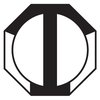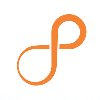
i
Utthunga Technologies
Filter interviews by
Utthunga Technologies Process Engineer Interview Questions and Answers
Utthunga Technologies Process Engineer Interview Experiences
1 interview found
(1 Question)
- Q1. About plant and designing
Interview Preparation Tips
Process Engineer Jobs at Utthunga Technologies
Top trending discussions






Interview questions from similar companies

Process Engineer Interview Questions & Answers
Technosoft Engineering Projects Limitedposted on 26 Dec 2024
I applied via Naukri.com and was interviewed in Nov 2024. There were 2 interview rounds.
(10 Questions)
- Q1. Pump and it's types it's API and design
- Ans.
Pumps are devices used to move fluids through a system. There are various types of pumps such as centrifugal, positive displacement, and reciprocating pumps.
Types of pumps include centrifugal, positive displacement, and reciprocating pumps
API standards for pumps include API 610 for centrifugal pumps and API 674 for reciprocating pumps
Pump design considerations include flow rate, pressure, material compatibility, and ef
- Q2. Storage tank design, API and types of ST
- Ans.
Storage tank design involves following API standards and various types of storage tanks.
API standards such as API 650 for welded steel tanks and API 620 for large, field-erected tanks
Types of storage tanks include atmospheric storage tanks, pressure storage tanks, and refrigerated storage tanks
Design considerations include material selection, tank size, pressure requirements, and safety features
- Q3. Types of Stainer
- Ans.
Types of strainers include Y-strainers, basket strainers, duplex strainers, and temporary cone strainers.
Y-strainers are used for applications with low flow rates and are easy to clean.
Basket strainers are commonly used in pipelines to remove larger particles.
Duplex strainers have two separate strainer baskets for continuous operation.
Temporary cone strainers are used during commissioning or maintenance to prevent debr
- Q4. CIP process
- Q5. Equipment hygiene?
- Q6. PSV and PRV design
- Q7. Use of Dimension less number
- Ans.
Dimensionless numbers are used in engineering to simplify equations and compare different systems.
Dimensionless numbers help in scaling and comparing physical phenomena without the need for specific units.
Examples include Reynolds number in fluid mechanics, Mach number in aerodynamics, and Peclet number in heat transfer.
They provide insight into the dominant forces or mechanisms in a system.
Dimensionless numbers are us...
- Q8. Line Sizing procedure
- Ans.
Line sizing procedure involves determining the appropriate diameter of pipes for a given flow rate and pressure drop.
Calculate the required flow rate and pressure drop for the system
Use fluid properties and pipe material to determine the appropriate pipe size
Consider factors such as velocity, friction loss, and future expansion
Ensure the selected pipe size meets safety and regulatory requirements
Common methods include ...
- Q9. Heat exchanger design
- Ans.
Heat exchanger design involves selecting the appropriate type, size, and materials to efficiently transfer heat between two fluids.
Consider the type of heat exchanger needed (e.g. shell and tube, plate heat exchanger)
Calculate the required heat transfer area based on heat load and temperature difference
Select materials compatible with the fluids and operating conditions
Optimize flow rates to maximize heat transfer effi
- Q10. Software handling, HTRI, Aspen
(2 Questions)
- Q1. Willing to travel abroad
- Ans.
Yes, I am willing to travel abroad for work.
I am open to new experiences and cultures
I understand the importance of global collaboration in engineering projects
I have previous experience traveling for work or education
I am willing to adapt to different working environments and challenges
- Q2. Why you left your previous job
- Ans.
Seeking new challenges and opportunities for growth
Desire for career advancement
Looking for new challenges
Opportunity for professional growth
Seeking better work-life balance

Process Engineer Interview Questions & Answers
Technosoft Engineering Projects Limitedposted on 26 Dec 2024
I applied via Naukri.com and was interviewed in Nov 2024. There were 2 interview rounds.
(10 Questions)
- Q1. Pump and it's types it's API and design
- Ans.
Pumps are devices used to move fluids through a system. There are various types of pumps such as centrifugal, positive displacement, and reciprocating pumps.
Types of pumps include centrifugal, positive displacement, and reciprocating pumps
API standards for pumps include API 610 for centrifugal pumps and API 674 for reciprocating pumps
Pump design considerations include flow rate, pressure, material compatibility, and ef
- Q2. Storage tank design, API and types of ST
- Ans.
Storage tank design involves following API standards and various types of storage tanks.
API standards such as API 650 for welded steel tanks and API 620 for large, field-erected tanks
Types of storage tanks include atmospheric storage tanks, pressure storage tanks, and refrigerated storage tanks
Design considerations include material selection, tank size, pressure requirements, and safety features
- Q3. Types of Stainer
- Ans.
Types of strainers include Y-strainers, basket strainers, duplex strainers, and temporary cone strainers.
Y-strainers are used for applications with low flow rates and are easy to clean.
Basket strainers are commonly used in pipelines to remove larger particles.
Duplex strainers have two separate strainer baskets for continuous operation.
Temporary cone strainers are used during commissioning or maintenance to prevent debr
- Q4. CIP process
- Q5. Equipment hygiene?
- Q6. PSV and PRV design
- Q7. Use of Dimension less number
- Ans.
Dimensionless numbers are used in engineering to simplify equations and compare different systems.
Dimensionless numbers help in scaling and comparing physical phenomena without the need for specific units.
Examples include Reynolds number in fluid mechanics, Mach number in aerodynamics, and Peclet number in heat transfer.
They provide insight into the dominant forces or mechanisms in a system.
Dimensionless numbers are us...
- Q8. Line Sizing procedure
- Ans.
Line sizing procedure involves determining the appropriate diameter of pipes for a given flow rate and pressure drop.
Calculate the required flow rate and pressure drop for the system
Use fluid properties and pipe material to determine the appropriate pipe size
Consider factors such as velocity, friction loss, and future expansion
Ensure the selected pipe size meets safety and regulatory requirements
Common methods include ...
- Q9. Heat exchanger design
- Ans.
Heat exchanger design involves selecting the appropriate type, size, and materials to efficiently transfer heat between two fluids.
Consider the type of heat exchanger needed (e.g. shell and tube, plate heat exchanger)
Calculate the required heat transfer area based on heat load and temperature difference
Select materials compatible with the fluids and operating conditions
Optimize flow rates to maximize heat transfer effi
- Q10. Software handling, HTRI, Aspen
(2 Questions)
- Q1. Willing to travel abroad
- Ans.
Yes, I am willing to travel abroad for work.
I am open to new experiences and cultures
I understand the importance of global collaboration in engineering projects
I have previous experience traveling for work or education
I am willing to adapt to different working environments and challenges
- Q2. Why you left your previous job
- Ans.
Seeking new challenges and opportunities for growth
Desire for career advancement
Looking for new challenges
Opportunity for professional growth
Seeking better work-life balance
Utthunga Technologies Interview FAQs
Tell us how to improve this page.
Utthunga Technologies Interviews By Designations
- Utthunga Technologies Software Developer Interview Questions
- Utthunga Technologies Embedded Testing Engineer Interview Questions
- Utthunga Technologies Java Developer Interview Questions
- Utthunga Technologies Senior Software Engineer Interview Questions
- Utthunga Technologies Software Engineer Interview Questions
- Utthunga Technologies Associate Engineer Interview Questions
- Utthunga Technologies Embedded Engineer Interview Questions
- Utthunga Technologies Embedded Tester Interview Questions
- Show more
Interview Questions for Popular Designations
- Process Engineer Trainee Interview Questions
- Process Associate Interview Questions
- Chemical Process Engineer Interview Questions
- Junior Process Engineer Interview Questions
- Processing Executive Interview Questions
- Process Developer Interview Questions
- Process Quality Engineer Interview Questions
- Process Control Engineer Interview Questions
- Show more
Utthunga Technologies Process Engineer Interview Process
based on 1 interview
Interview experience
Interview Questions from Similar Companies
Utthunga Technologies Process Engineer Reviews and Ratings
based on 1 review
Rating in categories
|
Software Engineer
230
salaries
| ₹4 L/yr - ₹13 L/yr |
|
Senior Software Engineer
154
salaries
| ₹5.9 L/yr - ₹22.5 L/yr |
|
Associate Software Engineer
134
salaries
| ₹2.5 L/yr - ₹6.3 L/yr |
|
Software Developer
74
salaries
| ₹4.1 L/yr - ₹15 L/yr |
|
Technical Lead
60
salaries
| ₹8.5 L/yr - ₹25.4 L/yr |

L&T Technology Services

TCS

HCLTech

Tech Mahindra
- Home >
- Interviews >
- Utthunga Technologies Interview Questions >
- Utthunga Technologies Process Engineer Interview Questions











